
How to Use Raspberry Pi 4B: Examples, Pinouts, and Specs
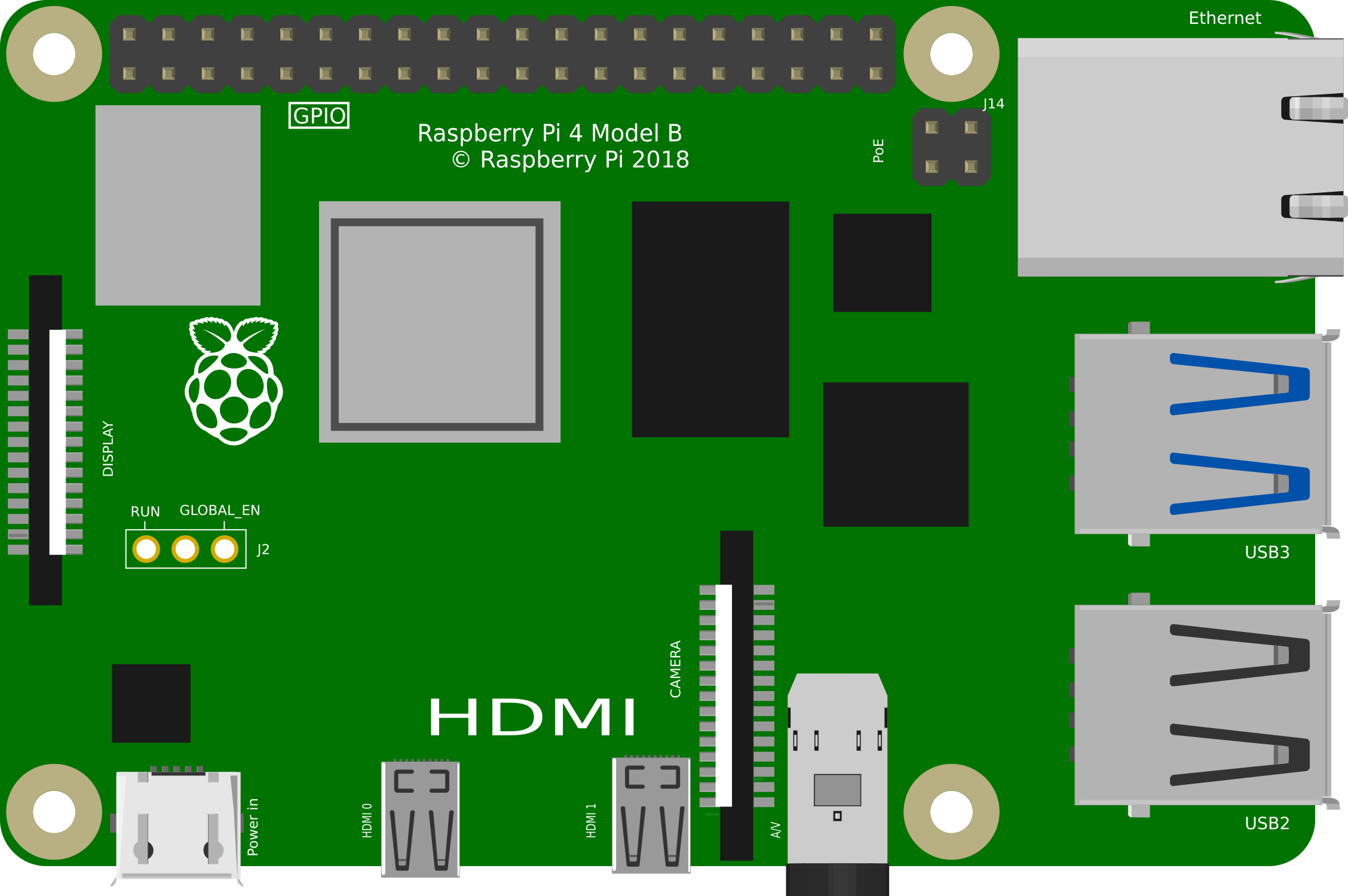
 Design with Raspberry Pi 4B in Cirkit Designer
Design with Raspberry Pi 4B in Cirkit DesignerIntroduction
The Raspberry Pi 4B is a compact, affordable single-board computer designed for a wide range of applications. It features a powerful quad-core processor, up to 8GB of RAM, multiple USB ports, dual micro-HDMI outputs, and support for various operating systems, including Raspberry Pi OS, Ubuntu, and more. Its versatility and performance make it ideal for projects such as home automation, media centers, IoT devices, robotics, and educational purposes.
Common applications and use cases include:
- Home automation systems
- Media streaming and gaming centers
- IoT and smart device prototyping
- Robotics and AI projects
- Educational tools for programming and electronics
Explore Projects Built with Raspberry Pi 4B
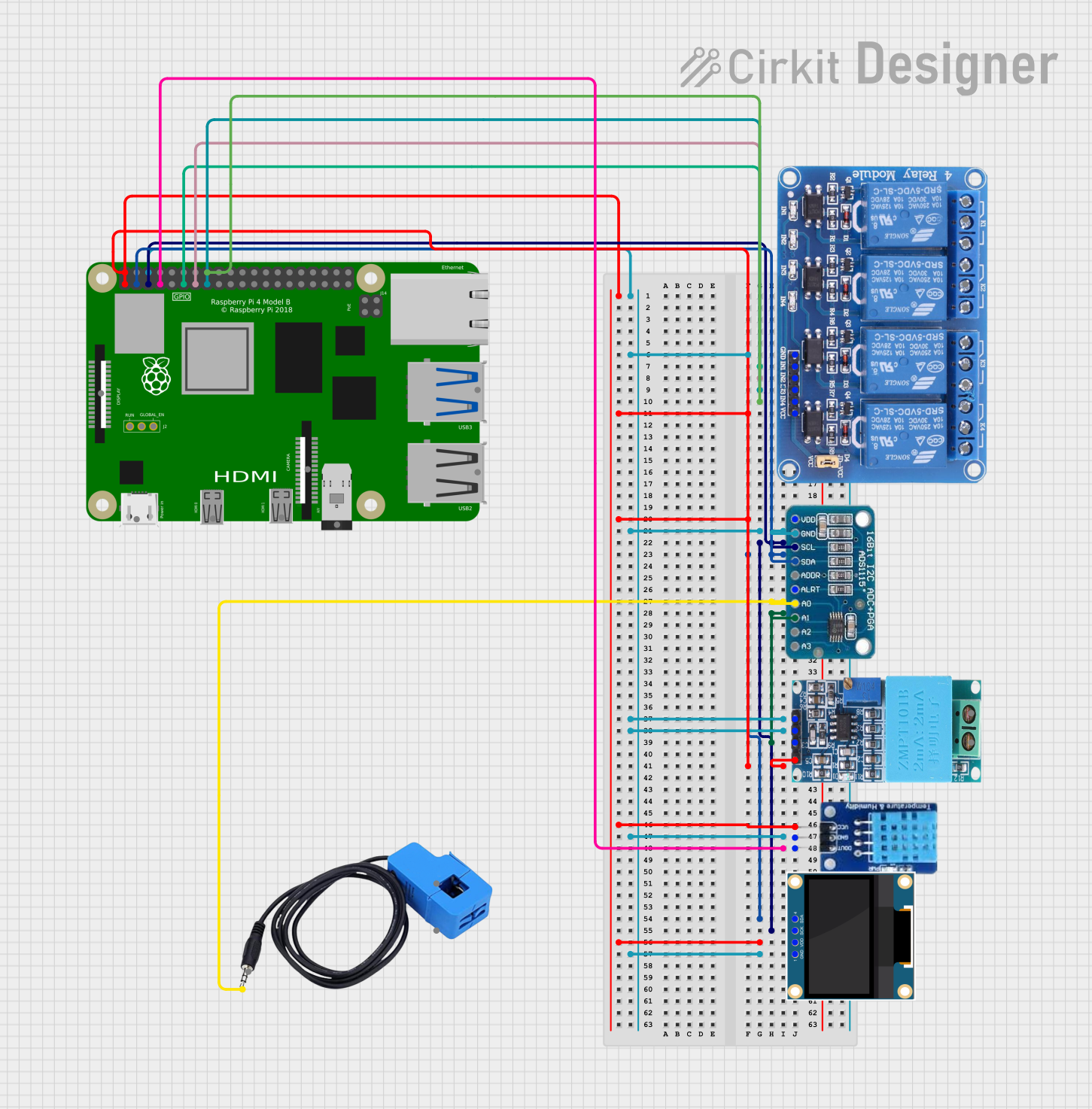
 Open Project in Cirkit Designer
Open Project in Cirkit Designer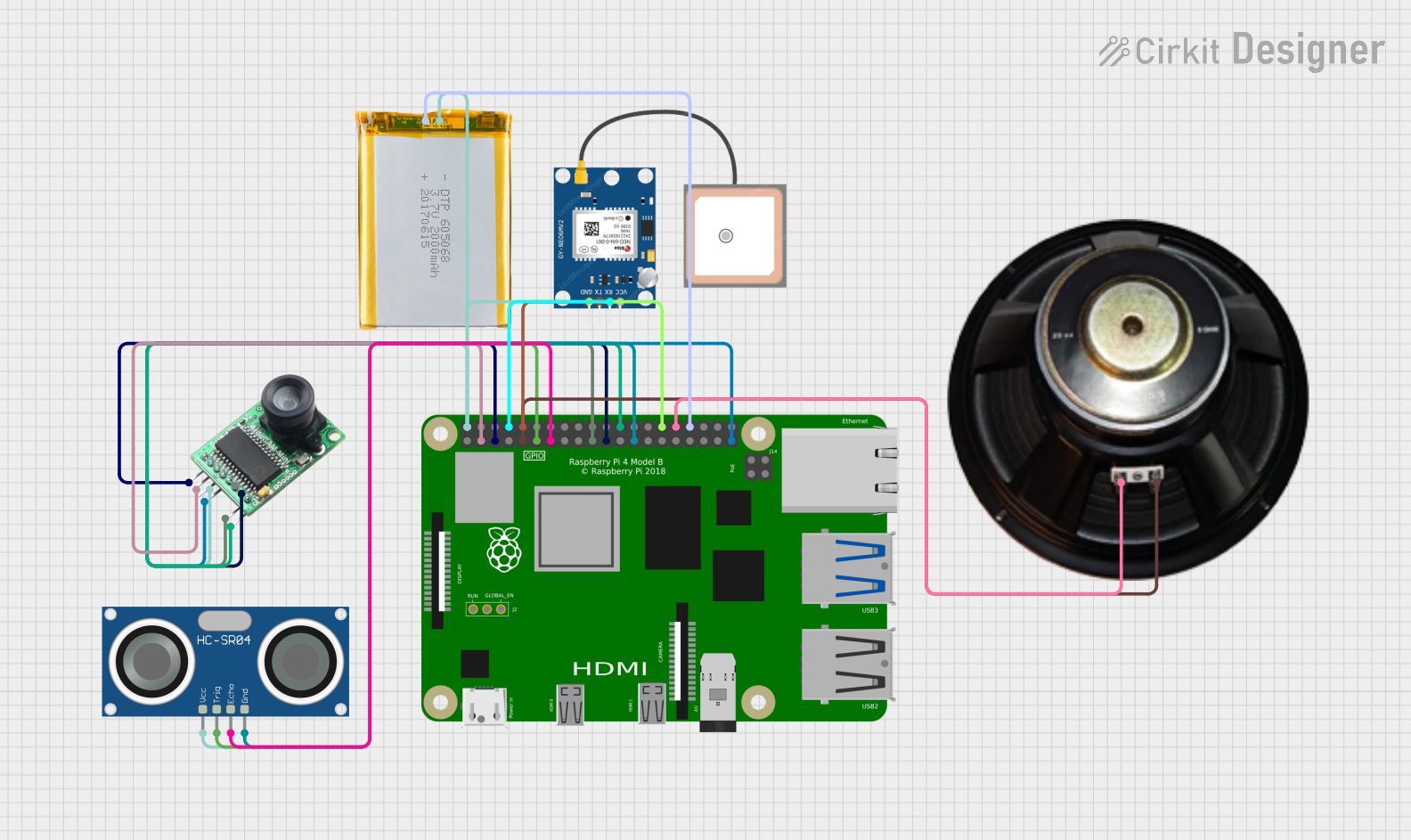
 Open Project in Cirkit Designer
Open Project in Cirkit Designer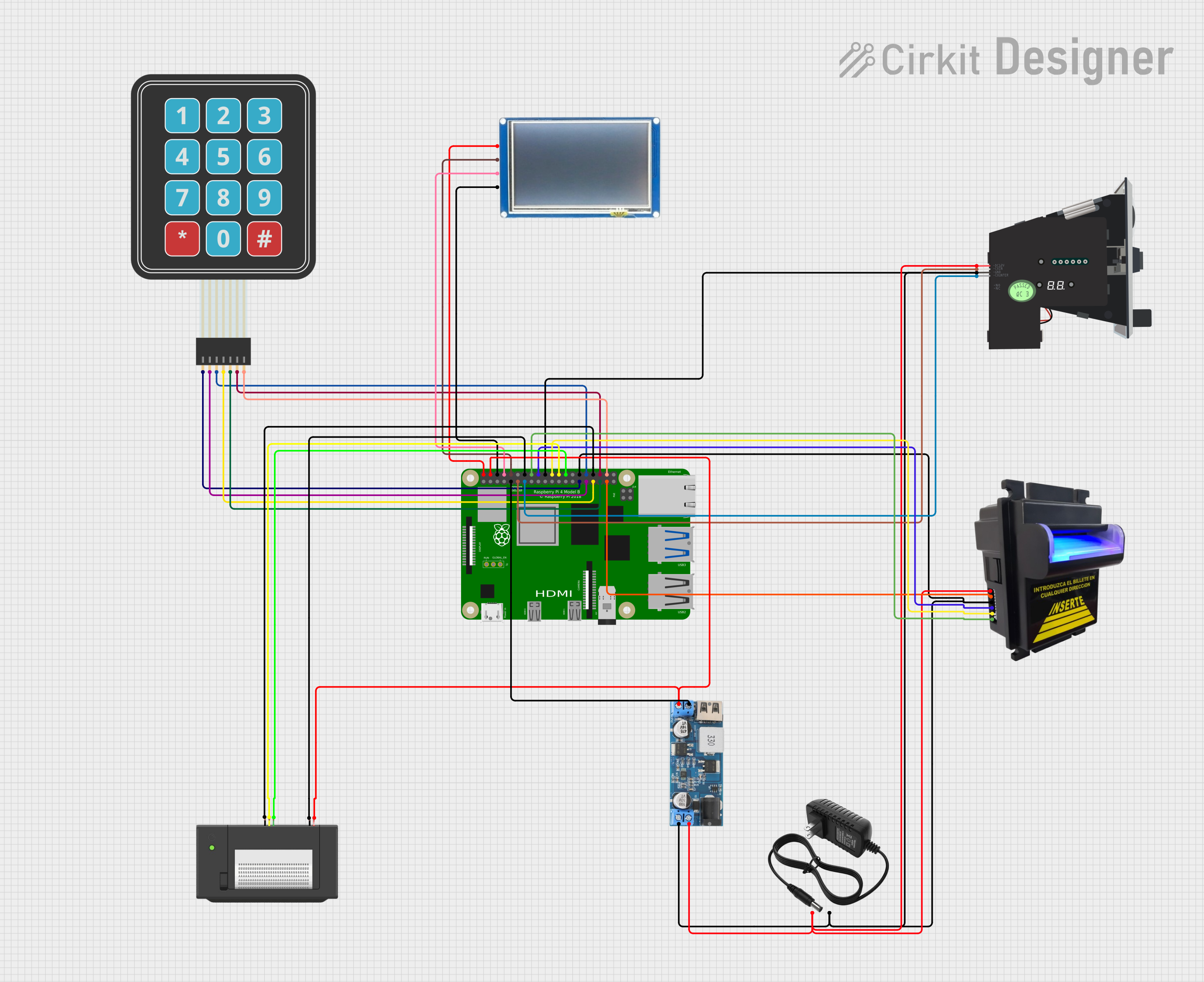
 Open Project in Cirkit Designer
Open Project in Cirkit Designer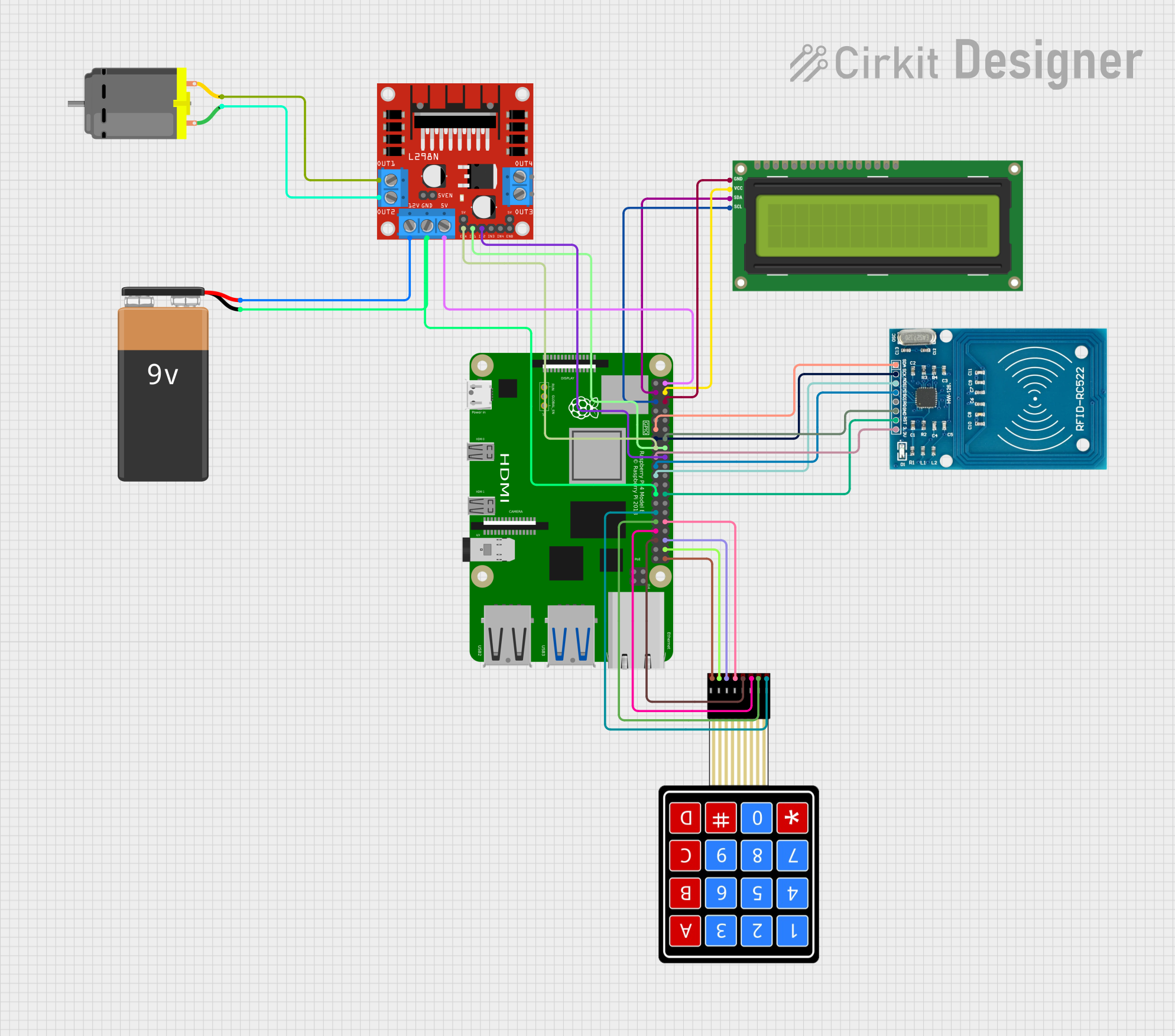
 Open Project in Cirkit Designer
Open Project in Cirkit DesignerExplore Projects Built with Raspberry Pi 4B

 Open Project in Cirkit Designer
Open Project in Cirkit Designer
 Open Project in Cirkit Designer
Open Project in Cirkit Designer
 Open Project in Cirkit Designer
Open Project in Cirkit Designer
 Open Project in Cirkit Designer
Open Project in Cirkit DesignerTechnical Specifications
The Raspberry Pi 4B offers the following key technical details:
General Specifications
| Feature | Specification |
|---|---|
| Processor | Broadcom BCM2711, Quad-core Cortex-A72 (ARM v8) |
| Clock Speed | 1.5 GHz |
| RAM Options | 2GB, 4GB, or 8GB LPDDR4 |
| GPU | VideoCore VI |
| Storage | MicroSD card slot |
| Connectivity | Gigabit Ethernet, Wi-Fi 802.11ac, Bluetooth 5.0 |
| USB Ports | 2x USB 3.0, 2x USB 2.0 |
| Video Output | 2x micro-HDMI (4K@60Hz support) |
| Power Supply | 5V/3A USB-C |
| GPIO Pins | 40-pin header |
| Operating Systems | Raspberry Pi OS, Ubuntu, and others |
Pin Configuration
The Raspberry Pi 4B features a 40-pin GPIO header for interfacing with external components. Below is the pinout:
| Pin Number | Pin Name | Description |
|---|---|---|
| 1 | 3.3V Power | 3.3V power supply |
| 2 | 5V Power | 5V power supply |
| 3 | GPIO2 (SDA1) | I2C Data |
| 4 | 5V Power | 5V power supply |
| 5 | GPIO3 (SCL1) | I2C Clock |
| 6 | Ground | Ground |
| 7 | GPIO4 | General-purpose I/O |
| 8 | GPIO14 (TXD) | UART Transmit |
| 9 | Ground | Ground |
| 10 | GPIO15 (RXD) | UART Receive |
| ... | ... | ... (Refer to official documentation for all pins) |
Usage Instructions
Setting Up the Raspberry Pi 4B
Prepare the MicroSD Card:
- Download the Raspberry Pi Imager tool from the official Raspberry Pi website.
- Use the tool to flash an operating system (e.g., Raspberry Pi OS) onto a microSD card.
- Insert the microSD card into the Raspberry Pi 4B.
Connect Peripherals:
- Attach a keyboard, mouse, and monitor to the Raspberry Pi.
- Use a micro-HDMI cable to connect the monitor.
- Optionally, connect to a network via Ethernet or Wi-Fi.
Power On:
- Connect a 5V/3A USB-C power supply to the Raspberry Pi.
- The Raspberry Pi will boot up, and you can follow the on-screen setup instructions.
Using GPIO Pins
The GPIO pins can be used to interface with sensors, LEDs, and other components. Below is an example of controlling an LED using Python:
Import the GPIO library
import RPi.GPIO as GPIO import time
Set the GPIO mode to BCM (Broadcom pin numbering)
GPIO.setmode(GPIO.BCM)
Define the GPIO pin connected to the LED
LED_PIN = 18
Set up the LED pin as an output
GPIO.setup(LED_PIN, GPIO.OUT)
Blink the LED in a loop
try: while True: GPIO.output(LED_PIN, GPIO.HIGH) # Turn the LED on time.sleep(1) # Wait for 1 second GPIO.output(LED_PIN, GPIO.LOW) # Turn the LED off time.sleep(1) # Wait for 1 second except KeyboardInterrupt: # Clean up GPIO settings on exit GPIO.cleanup()
Important Considerations
- Use a high-quality power supply to ensure stable operation.
- Ensure proper cooling (e.g., heatsinks or a fan) for intensive tasks.
- Avoid shorting GPIO pins to prevent damage to the board.
Troubleshooting and FAQs
Common Issues
No Display Output:
- Ensure the micro-HDMI cable is connected to the correct port (HDMI0).
- Verify that the monitor is powered on and set to the correct input source.
Wi-Fi Not Connecting:
- Check the Wi-Fi credentials and ensure the network is within range.
- Update the Raspberry Pi OS to the latest version using
sudo apt update && sudo apt upgrade.
Overheating:
- Install a heatsink or fan to improve cooling.
- Avoid running the Raspberry Pi in enclosed spaces without ventilation.
GPIO Pins Not Working:
- Double-check the pin connections and ensure the correct pin numbering mode (BCM or BOARD) is used in the code.
- Verify that the GPIO library is installed (
sudo apt install python3-rpi.gpio).
FAQs
Can I power the Raspberry Pi 4B via GPIO pins?
Yes, you can supply 5V to the 5V GPIO pin, but this bypasses the onboard voltage regulation. Use caution.What is the maximum supported resolution for video output?
The Raspberry Pi 4B supports up to dual 4K displays at 60Hz.Can I use the Raspberry Pi 4B for AI and machine learning?
Yes, the Raspberry Pi 4B is capable of running lightweight AI and machine learning models, especially with tools like TensorFlow Lite.How do I update the firmware?
Run the following command:sudo rpi-update
This concludes the documentation for the Raspberry Pi 4B. For more details, refer to the official Raspberry Pi website.